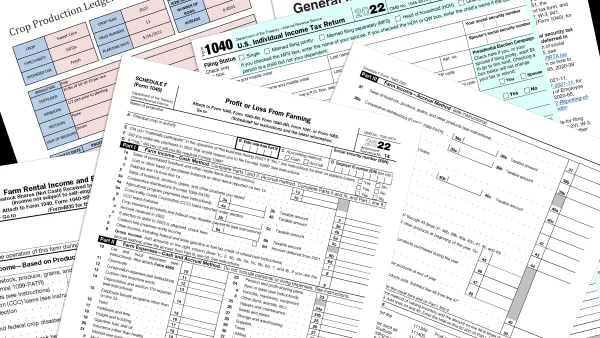Don’t underestimate the importance of XBRL accuracy to investors and the Securities and Exchange Commission (SEC), experts say.
eXtensible Business Reporting Language, or XBRL, is a standards-based method of sharing business information between systems. Created in the late 1980s and adopted by the SEC in 2008, it allows public companies to tag data in their financial reports and increase transparency and accessibility by using an agreed-upon format.
The SEC requires public companies, mutual funds and credit rating agencies to file financial statements in the machine-readable format. The Federal Deposit Insurance Corp. (FDIC) imposes the same requirement on the institutions it regulates.
Companies submit their XBRL data in interactive data files that are included as exhibits to their reports and post the files on their websites, although, under new SEC rules, the tags will eventually be embedded directly in the text of an html document and the website posting requirement will go away. The new requirements are being phased in over three years.
There’s limited enforcement of the standards, though, to ensure the tags are being used accurately. The SEC needs to put "some teeth around really bad XBRL submissions," Rob Blake, product management director for automated accounting software company BlackLine, and an early backer of the standards, has said.
XBRL is already baked into most of the tools the SEC’s Enforcement Division’s data analysts use, said Howard Kaplan, a data analyst with the SEC's Center for Risk and Quantitative Analysis.
He pointed out XBRL’s meta data has been useful in analyzing peer groups for companies over a wide range of metrics such as the number of times firms have changed auditors or amended fillings.
Now that the tags have been in use for at least 10 years for public companies, the more useful it has become to SEC enforcement efforts because of its central role in helping analysts find patterns in their investigations, he said.
Usability depends on quality
Stock pickers (retail and institutional) also benefit from XBRL because it facilitates generally good quantitative information they can access directly or through third parties, Ken Bertsch, executive director of the Council of Institutional Investors, the largest pension funds trade group association, told CFO Dive.
"XBRL clearly makes financial statements more usable for more investors in more situations," said Bertsch.
Discovering errors in a business’s XBRL reports can make analysts think there might be inaccuracies in the firm’s other financial filings and lead analysts to look for them, Kaplan said.
Some errors, such as wrong tagging, can be detected by computers before XBRL filings are sent to the SEC but others can only be uncovered by humans, according to Toppan Merrill, a financial disclosure software and consulting firm.
“Whether from inside or outside the company, the XBRL preparer and reviewer should have a deep understanding of accounting disclosures, experience with the XBRL specification, expertise with the EDGAR Filer Manual, familiarity with the US GAAP or IFRS taxonomy, and knowledge of the XBRL US Data Quality Committee rules,” a Merrill blog post writes.
The Data Quality Committee (DQC) of XBRL US, which sets standards outside of the government, is composed of securities analysts, filing agents, and public company preparers. The Financial Accounting Standards Board (FASB) and the International Accounting Standards Board (IASB) are observers. FASB and IASB set accounting rules in the U.S. and outside the U.S., respectively.
In an effort to help companies identify and resolve errors before they submit XBRL filings to the SEC, the DQC has developed a package of rules.
The rules cover a range of errors, from wrong dates to incorrect calculations, and the inappropriate use of axes when creating financial tables. They were incorporated by FASB into the 2020 release of the U.S. GAAP Financial Reporting Taxonomy this month.
"The rules … along with the implementation guides and other applications developed by the FASB, are important tools that can be used by preparers to improve quality and consistency, and we encourage their use," said Louis Matherne, FASB chief of taxonomy development.
Tagging becomes board concern
As the importance of XBRL grows, it has reached the status of a board concern, said Ami Beers, CPA, CGMA Senior Director — Assurance and Advisory Innovation, Association of International Certified Professional Accountants.
"Boards don’t need to understand the underpinnings of the technology," Beers, AICPA’s XBRL expert, told CFO Dive. "What they need to do is make sure management controls and procedures are in place."
She warned companies are still on the hook for fixing errors even if they outsource their XBRL creation to service or software vendors.
Beers noted the outsourcing can be complete or a hybrid with the participation of company staff.
She added while ERP systems have tagging capabilities built in, work needs to be done by company employees to incorporate new accounting standards and new events at the firm.
AICPA offers an XBRL Fundamentals Course for company employees, those who are responsible for financial reporting regardless of whether the XBRL tagging process is performed within a company or outsourced to a service provider.
In Europe and Asia, there is an increased use of artificial intelligence (AI) to help management prepare digital disclosures that are less expensive and more comparable to filings from other companies, John Turner, CEO of XBRL International, told CFO Dive.
He said obvious differences in XBRL reports underpinning internationally is that Europe uses international financial reporting standards (IFRS), while the United States uses generally accepted accounting principles (GAAP).
He said there is a global trend to move towards IFRS.
XBRL is used for financial reporting requirements in more than 50 countries.
XBRL US CEO Campbell Pryde said one of the goals of his organization is to make XBRL filings standard for the financial regulators to avoid the time and money spent by firms on producing duplicate and different reports for the overseers.
Clarification: AICPA's XBRL course was renamed from a year ago.




















